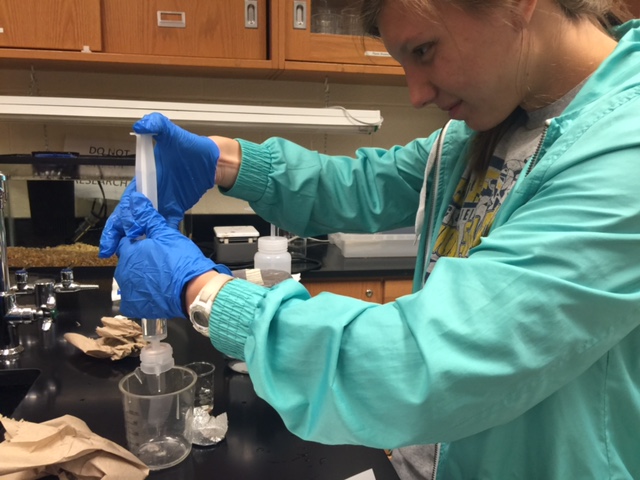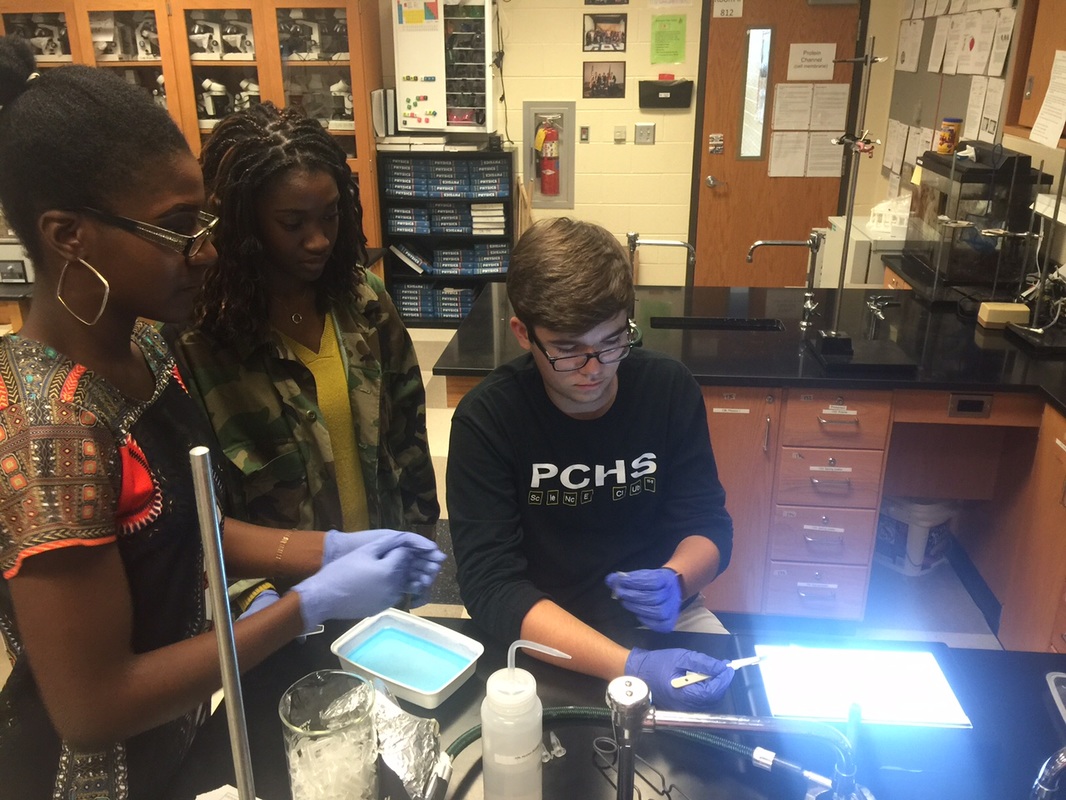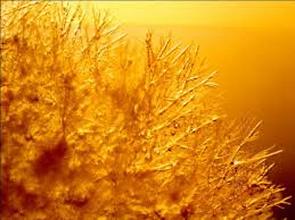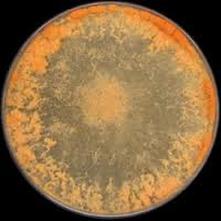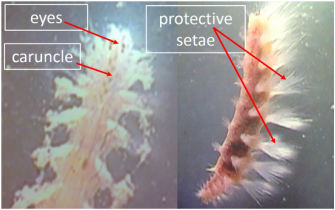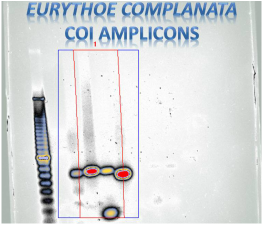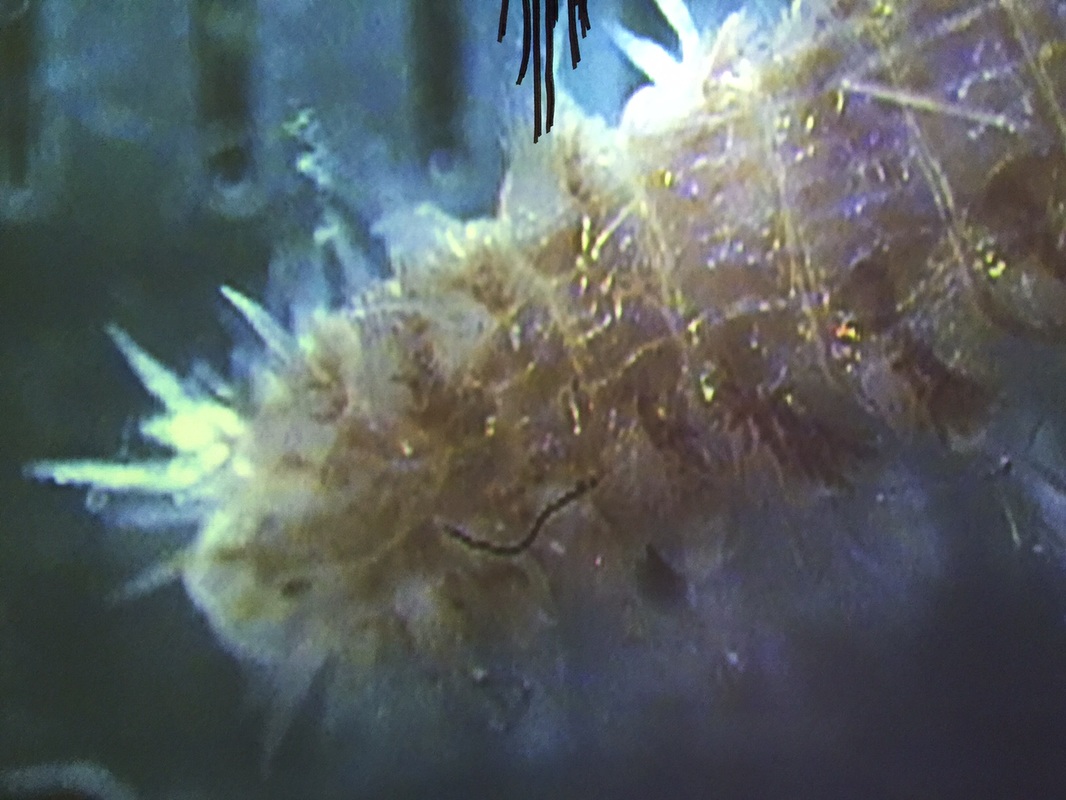Students in the Biotechnology Pathway are conducting original and innovative research and are required to submit their findings for peer-reviewed publication in the Journal of Emerging Investigators by the end of their senior year. We have identified several model systems and techniques for our lab. Although some students are conducting research outside of these areas, we have chosen to provide details on our identified specialty areas of research:
- Environmental DNA (eDNA)
- Marine polychaetes (fireworms)
- Neurospora crassa (fungus)
- CRISPR (clustered regularly inter-spaced short palindromic repeats)
Environmental DNA (eDNA)
Environmental DNA (eDNA) is naturally released into an aquatic system in the form of skin cells, mucus, feces, carcasses, gametes, and hair. This type of DNA can be collected from water samples and isolated using special filters that capture the genetic material. The DNA can then be extracted and purified for further analysis.
|
Your browser does not support viewing this document. Click here to download the document.
Your browser does not support viewing this document. Click here to download the document.
|
Your browser does not support viewing this document. Click here to download the document.
Your browser does not support viewing this document. Click here to download the document.
|
Neurospora crassa
Neurospora crassa (N. crassa) is a type of red bread mold of the phylum Ascomycota. N. crassa is used as a model organism because it is easy to grow and has a haploid life cycle that makes genetic analysis simple since recessive traits will show up in the offspring. Its entire genome of seven chromosomes has been sequenced. Our research uses auxotrophic strains of N. crassa to explore use of the CRISPR-cas9 system and genome editing. We are also designing primers to isolate a gene, cellulase, responsible for the production of ethanol from cellulose. We hope to engineer a plasmid with the cellulase and cellobiase genes, which would have environmental applications and potential uses in bio-fuel development. N. crassa has become one of the premier models for investigation into the epigenetic regulation of the eukaryotic genome. Neurospora has many advantages for use as a model system in epigenetic research, thus this is another area of research we will pursue.
Marine Polychaete Worms
Fireworms and bristleworms are marine polychaetes that are commonly found in reef habitats throughout the world. The worms are characterized by their small, protective setae, which are hollow bristles containing a mild venom. We first started working with these animals in 2012, during which time we were also researching orange-cup coral with a marine biologist at the Georgia Institute of Technology. The worms are fascinating creatures, as they are able to reproduce both asexually and sexually. They are a model specimen for our lab because they are quite tolerant of environmental conditions and they are able to reproduce rapidly by fragmentation. In the past we used randomly amplified polymorphic DNA (RAPD) to conduct clonality research.
Students are currently using bioassays to study genotoxic pollutants and the presence of xenobiotics in our population of polychaete worms. We are also continuing our barcoding efforts using the Cytochrome C Oxidase subunit I gene.
Students are currently using bioassays to study genotoxic pollutants and the presence of xenobiotics in our population of polychaete worms. We are also continuing our barcoding efforts using the Cytochrome C Oxidase subunit I gene.

